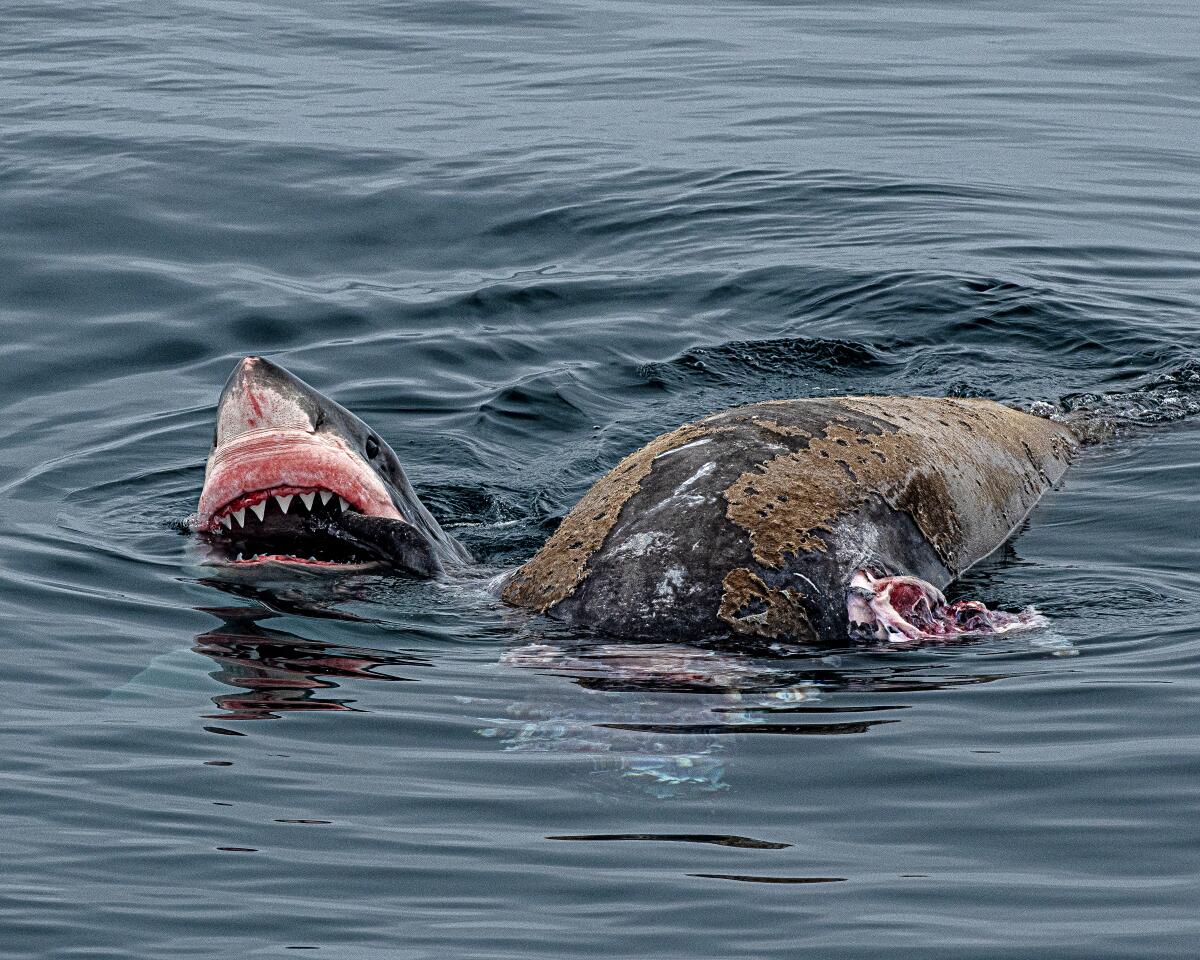
While on a whale watching excursion, they had the photo opportunity of a lifetime when they spotted a rare great white shark feeding on an elephant seal about 30 miles west of Santa Barbara.
The group of about 50 people was aboard the Condor Express, which operates daily whale-watching tours in the Santa Barbara Channel, according to Capt. Dave Beezer, who has worked for the company for nearly 20 years.
On Aug. 30, the group spotted the floating carcass of a dead elephant seal about 14 miles off the coast of Gaviota, and Beezer knew he had to stay in the area, he said. The seal’s head was missing, so he figured a predator might be involved. Shortly after, a 16-foot adult white shark emerged from the water and began feeding on the carcass.

On August 30, the Condor Express whale watching excursion near Santa Barbara saw a great white shark feeding on an elephant seal.
(Robert Perry/CondorExpressPhotos.com)
“He would sink his jaws into the seal’s side and pull out big chunks, then he would disappear from sight,” he said.
White sharks, sometimes called great white sharks (Carcharodon carcharias), are the species featured in the 1975 classic film “Jaws.” The population of white sharks in the northeast Pacific is increasing and is not at risk of being endangered in U.S. waters, according to the National Oceanic and Atmospheric Administration.
The shark circled the boat and surfaced four or five times to bite the seal. Robert Perry, who has been photographing the ocean since the late 1960s, was also on board, as a staff photographer on the Condor Express. The only time he took pictures of white sharks was when they were swimming around or under a dead whale, so they were not fully visible.
Perry managed to capture several images of the great white shark feeding.
“It was just breathtaking and a rare opportunity,” Perry added. “It was the photo of a lifetime.”
Beezer said he has seen a white shark feeding about four or five times in his life. He stressed the importance of the white shark to the area. Because San Miguel Island serves as a breeding ground for seals, the area is home to some of the largest seal populations in the world. White sharks help keep some of those populations in check, he said.
“This is not some mindless killing machine that we should all be afraid of,” he added. “This is a calculating predator that plays an important role in the ocean ecosystem.”

